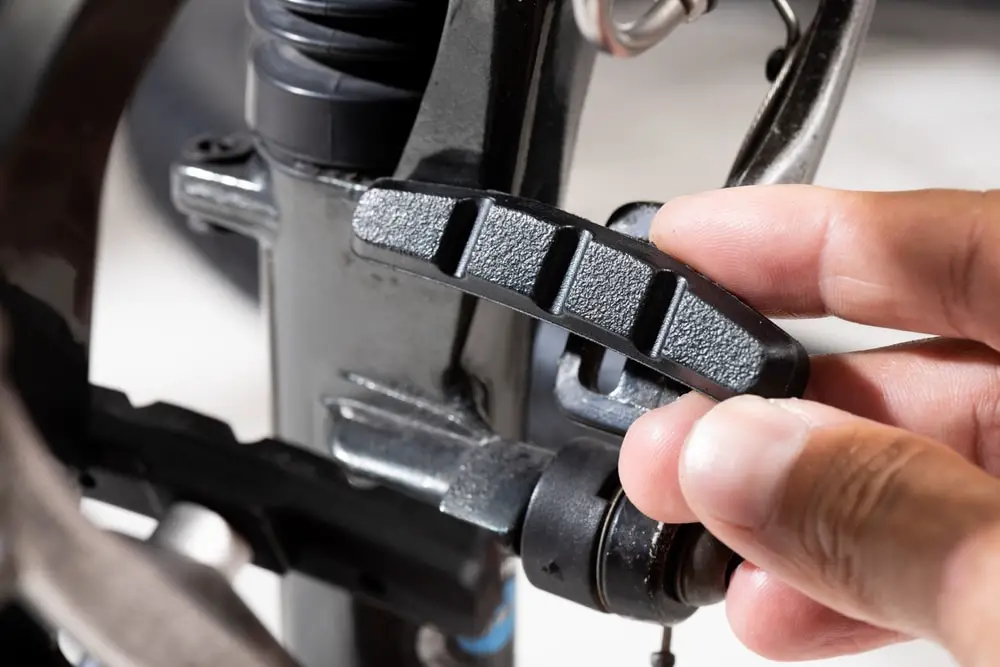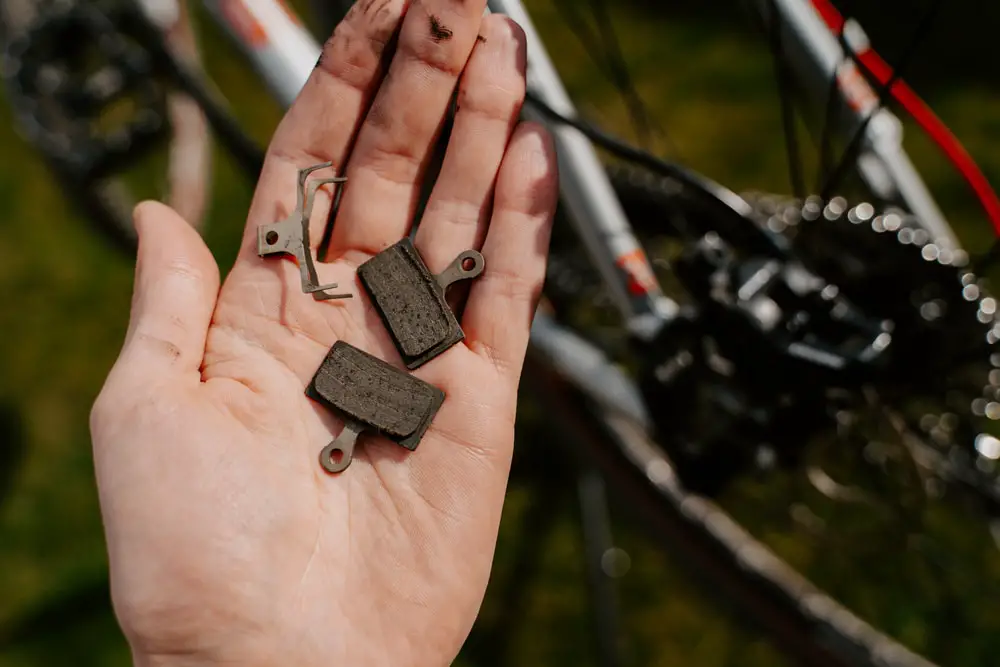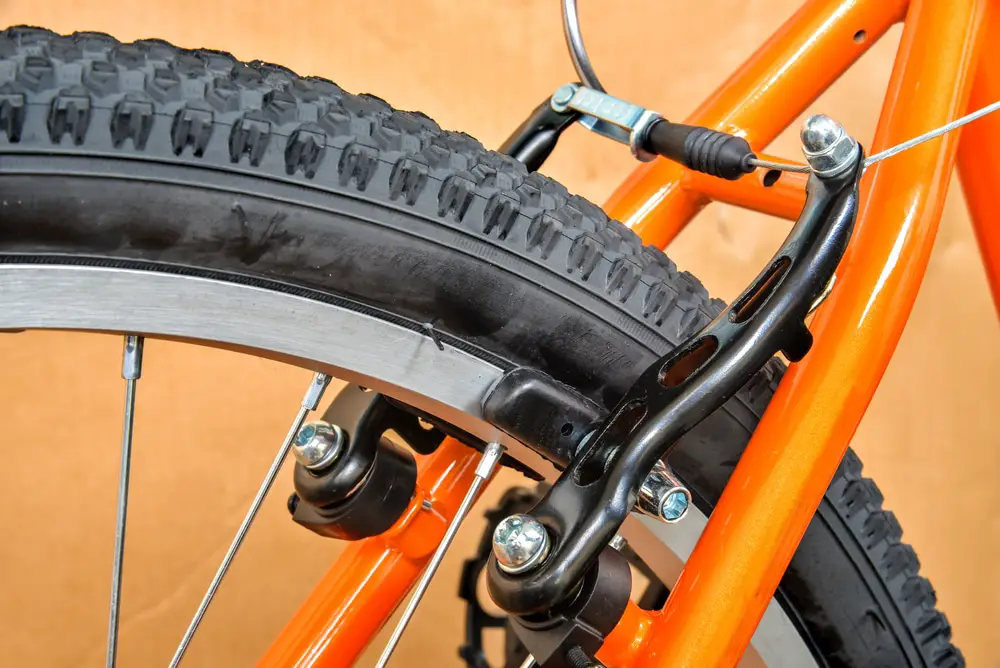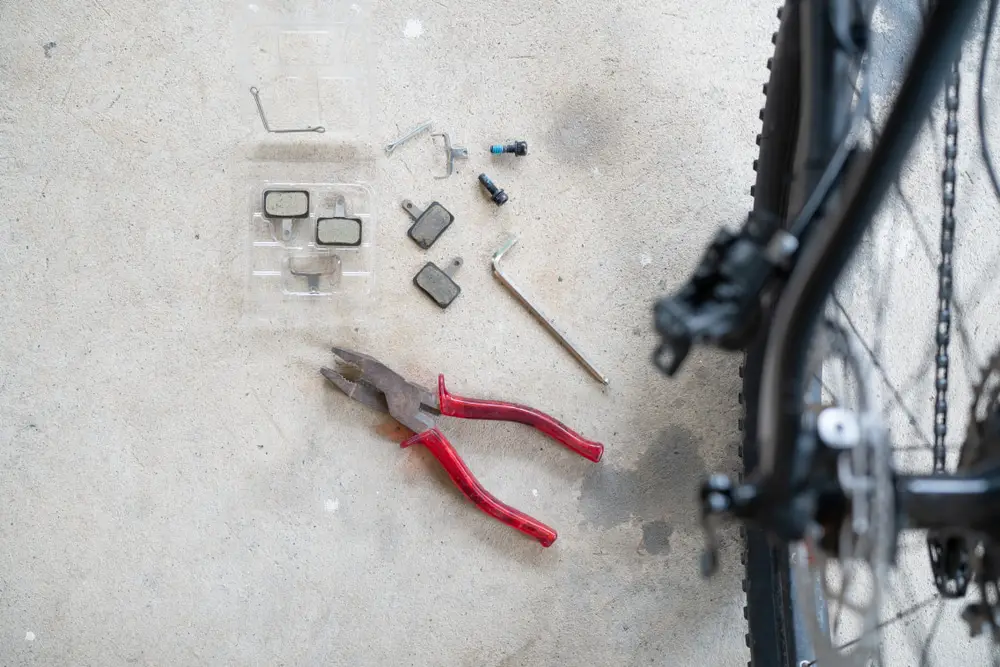Can You Use Wd40 On Brake Pads?
Do you shudder when you hear creaking sounds when cycling, particularly those created by the friction of the brake pads against the bicycle rim? It's difficult to fix this noise-related problem, which prompts you to consider WD40 - which can eliminate rust-related noises - and ask yourself, "Can you use WD40 on brake pads?"
Is this a possible combination? Is WD40 effective in resolving issues with brake pads? Is there any risk of this combo or having negative side effects? To find the correct answer, let's read the below article.
WD40 - The most popular anti-rust oil bottle on the market
WD40 is a high-tech anti-rust oil produced in the United States that is widely used and highly famous in the market. Many people like it because of its powerful penetrating capacity to break the structure of rust layers, polish the metal surface to prevent rust, repel water, and separate the metal surface from the air to avoid reflection chemical reactions that cause metal rusting.

WD40 - The most popular anti-rust oil bottle on the market
WD40 has a wide range of applications in aviation, marine, and everyday life. It is thought to fully eliminate unwanted noises such as creaking and rust caused by friction with metal surfaces.
What is WD-40 Good For?
WD-40 is an excellent lubricant that protects bike parts from corrosion and rust. It also removes dirt and grime.
So can you use WD40 on brake pads?
The brake pad has an issue that causes it to rub against the bike rim, making a squeaky sound that makes you shudder, or the brake pad has a rust problem that makes you interested in whether or not you should use WD40 on brake pads. The recommended answer is NO.
The WD40 is perfectly usable on other bike parts. However, it should only be sprayed on the metal bike parts inside before being put together. Using WD40 on brake pads, in particular, is a bad idea for the following reasons:
If the brake pads are lubricated with WD40, the bike will not stop in time.
The principle of noise reduction of WD40 is not simply creating suitable smoothness to reduce the noise generated by friction with
The objective of WD40 noise reduction is not to create an appropriate smoothness to minimize the noise caused by friction with metal surfaces; thus, applying it on brake pads will reduce friction, and the bike will be unable to stop in time.

If the brake pads are lubricated with WD40, the bike will not stop in time.
Furthermore, WD40 acts as a solvent, causing rust to dissolve and fall off while the bike is running, making it difficult to maintain control over the condition of the brake pads. Even if they are cleaned after use, the lubricant contained in WD40 remains on the equipment's surface. This is also why the brake pads do not grip the rim strongly enough when you use them, causing the bike not to stop promptly.
This is particularly problematic when riding, especially over long distances or in mountain terrain vehicles, because if the brake pads do not act appropriately, you may have unfortunate accidents that result in unwelcome injuries.
Corrosion of brake calipers due to contact with WD40
Because WD40 is a corrosive solvent, it can cause brake calipers to swell, causing their structure to break and become softer. If such a situation arises, the following outcomes are possible:
- Corrosion causes brake pads to lose their ability to stick, causing worn brake pads to no longer perform efficiently and eventually stop working.

Corrosion of brake calipers due to contact with WD40
- Dust on the brake caliper can cause it to corrode and the linkages to fail, resulting in poor performance and possibly dangerous disengagement for users while in motion.
Brake pads damaged by contact with WD40
When used on a surface other than metal, WD40 acts as a rust remover and has no positive effect. It is not a cleaning product. Thus it will not clean your brake pads. Instead, when sprayed on the brake pads, it will act as an oil that is tough to wash and create smoothies - the things that make brake pads cannot hold the rim. Because your brake pads are no longer operating correctly, you must replace or clean them to ensure a safe itinerary.
Brakes that get dirty can cause serious issues, and you're better off using brake cleaner or warm tap water. You should always make sure that any brake cleaner you buy is bike-specific because some car brake cleaners can be made up of oil.

Brake pads damaged by contact with WD40
On the other hand, because WD40 is a solvent, it has the power to corrode brake pads and ruin them. As a result, WD40 should not be used on bicycle brake pads.
Reasons to Not Use WD40 on Brakes
WD-40 should never be sprayed on brakes because it could damage them and make them wear out faster than usual. WD-40 shouldn't be used on brake linings or brake shoes because this could lead to premature wear. Lastly, WD-40 shouldn't be sprayed on the brake rotors because this could crack them.
Bike Failing to Stop on Time
WD-40 is a chemical used as a solvent. It dissolves rust and cleans metal surfaces. Using WD-40 on brakes can be harmful because it causes them to fail. We are leaving WD-40 on brakes results in oil being left behind. This can cause problems such as cars not braking when needed, leading to accidents.
WD40 Can Cause Caliper Corrosion
WD-40 corrodes the piston seal and makes it hard to move. Brakes start to wear out, and pistons get damaged. Leaks happen when the dust boot falls apart. Seizures can be caused by overheating seals. Cars become less powerful and may fail to accelerate.
WD40 May Destroy Brake Pads
WD40 is used as a lubricant, but it won't clean anything. It would help if you didn't use WD40 on brake pads because they're made of metal, and WD40 isn't meant to go on metals. WD40 doesn't work well when there's friction involved. When braking, brake pads help slow down the vehicle by providing friction. WD40 can damage brake pads, so you should avoid using it.
The bike brakes squeal when in use. How do I get rid of this noise?
When the bike brakes create noise while in use, this is an indication that the brake is in an unstable state, instead of attempting to fix it yourself or checking it at home, the best option for you is to take the bike to a repair shop for guidance and proper repair or replacement component.

The bike brakes squeal when in use. How do I get rid of this noise?
After a repair, the braking system may create an unpleasant noise caused by friction between the new brake pads and the rim and may go away after 1-2 cycling. Of course, there are techniques to fix this scream, such as applying brake grease to the appropriate contacts on the caliper and gluing it to the back of the brake pads. It would be best not to allow oil to get on the brake pads. Therefore if you are not professional skilled, you should seek expert assistance.
Some noise-reducing pads are inserted into the brake pads to neutralize noise-generating vibrations, which is also a good choice to reduce the noise generated by the brake pads.
How to clean WD40 sticky on brake pads?
If using WD40 is what you did before reading this article and are experiencing the undesirable effects of this solvent on your bicycle brake pads, what you need to do is replace or clean the brake pads.
So how to clean WD40 sticky on brake pads?
To remove WD40 from your bike brake, you need to remove it from the bike and use alcohol or clean water to clean it. Removing the brake from the vehicle ensures easy cleaning, and the WD40 can be cleaned without clinging to even the nooks and crannies of the brake pads.

How to clean WD40 sticky on brake pads?
You may also need to use detergent and washing tools to clean bicycle brake pads. After cleaning, you will need to dry before reinstalling the brakes on the bike. Dry to ensure that you can check that there is no WD40 residue left on the bike brake pads.
While cleaning is possible, sticking WD40 to a bicycle brake may require a replacement new brake to ensure proper operation of the vehicle.
Can you clean brake discs with wd40?
It doesn't. It leaves a greasy residue. For the rotor, bike brake cleaner, isopropyl alcohol from your local auto parts store is the most effective way to clean it. You can spray it liberally on the rotor, which will dissolve the WD40 residue.
Conclusion
Problems related to bicycle brakes directly impact your journeys with the bike, so self-repair is often unsafe, especially tips like using WD40 on brake pads are not recommended.
To make sure your brakes are working correctly and your ride is safe, seek the help of a repair specialist for the most appropriate repair advice and advice. I hope you have gained practical knowledge about bicycles through this article, and thank you for reading our article.

